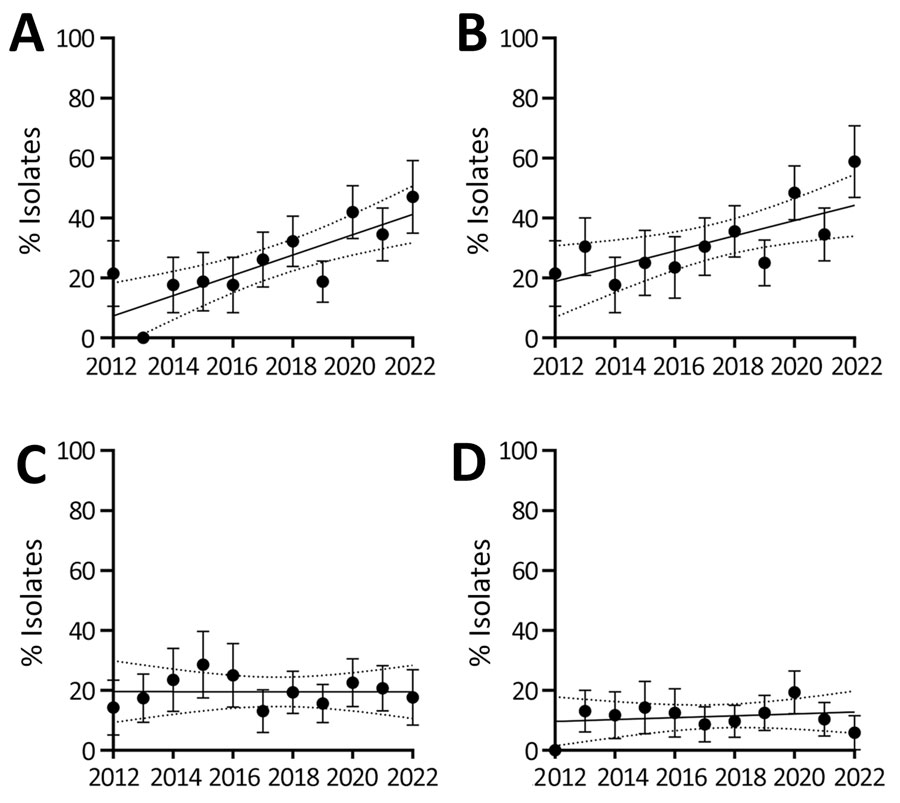Volume 31, Number 7—July 2025
Research
Emergence of Flucytosine-Resistant Candida tropicalis Clade, the Netherlands
Figure 5

Figure 5. Trends in percentages of flucytosine-resistant and fluconazole-resistant non–wild-type (WT) Candida tropicalis isolates, the Netherlands, 2012–2022. A) Percentages of flucytosine (5-FC) non-WT isolates within the specific clade identified in the Netherlands. B) Percentages of all 5-FC non-WT isolates, regardless of clade affiliation. Isolates with a 5-FC MIC above the local epidemiologic cutoff of 0.5 mg/L were classified as non-WT. C) Percentage of fluconazole non-WT isolates. Isolates with a MIC above the local epidemiologic cutoff of 1 mg/L were classified as non-WT. D) Percentage of fluconazole-resistant non-WT isolates. Isolates with values above the EUCAST clinical breakpoint of 4 mg/L were classified as resistant. Solid vertical lines indicate slopes; dotted lines above and below the slope indicate 95% CIs. Error bars indicate SEM. Slopes significantly deviated from zero in panels A and B (p<0.001 for both) but not in panels C (p = 0.992) or D (p = 0.640).
1These first authors contributed equally to this article.
2These senior authors contributed equally to this article.